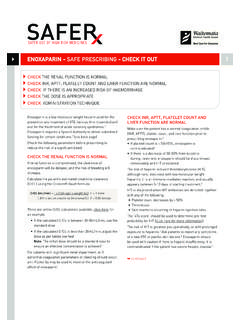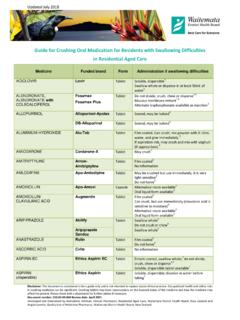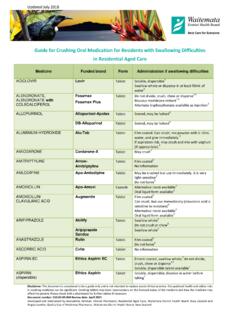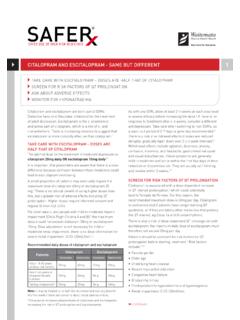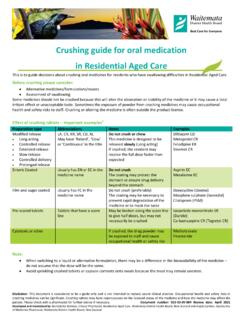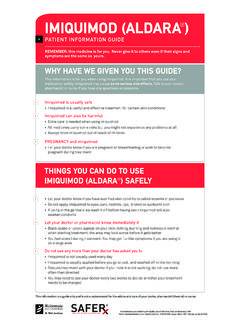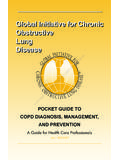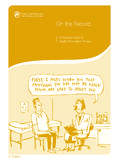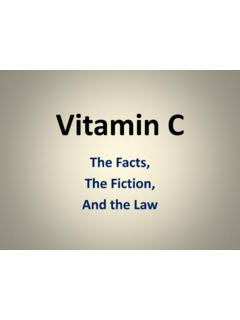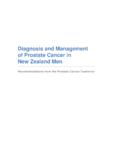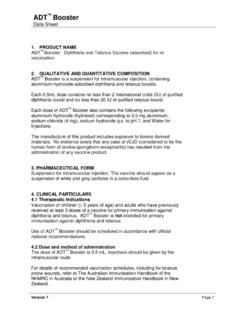Transcription of ECZEMA – SAFE PRESCRIBING - A TOPICAL ISSUE 1
1 ECZEMA is a chronic relapsing itchy inflammation of the skin affecting approximately 20% of new zealand children1 and has disproportionally higher rates among Maori and Pacific Onset can be at any age, but is most common before the age of 5 years. Often there is a family history of ECZEMA , asthma or Skin with ECZEMA has altered integrity and an increased risk of infection with bacteria (eg staphylococcus and streptococcus) and viruses (eg herpes and molluscum). Genetic abnormalities in the skin barrier proteins have recently been identified in patients with ECZEMA , suggesting that abnormal skin barrier function is a key determinant of ,5 General management principles include: daily moisturising, appropriate use of TOPICAL steroids, avoidance of possible irritants, and education about signs of infection to ensure prompt treatment.
2 The under-use of TOPICAL treatment is more of a concern than overuse;1 it is important that this is emphasised to parents and Most children with ECZEMA can be managed with TOPICAL treatment in primary care1, potentially avoiding complications such as infections and cellulitis that may require admission to secondary care and lead to significant morbidity and costs for children and their SOAP SUBSTITUTESS oaps can be drying and irritating to the skin, so soap-free washes should be Funded options include aqueous cream and emulsifying ointment which can be applied before the bath and then washed off.
3 (People may find non-funded options easier to use). Lukewarm baths of 10-20 minutes are best;5,7 avoid very hot water which can cause pruritus via vasodilation, and potentially damage the skin barrier by scalding. Small amounts of bath oils may be used to increase hydration. Take care with younger children; bath oils can make the bath very To reduce staphylococcal colonisation and reduce ECZEMA severity, antiseptic baths can be used 2-3 times per week. These baths can be prepared by adding 2ml of bleach ( hypochlorite Budget Household Bleach, not Janola ) to 1 Litre of bathwater approximately 150ml of bleach to a 10cm-deep full-sized ,8 Ideally the child should stay in the bath for 5-10 minutes and then rinse with fresh Antiseptic baths should not be used if there are extensive areas of broken skin.
4 Children should be supervised to avoid ingestion of bath Antiseptic bath oils are available but these are not ARE ESSENTIAL Emollients are the mainstay of therapy but are often underused; they should be applied even when ECZEMA is well Ideally they should be applied several times a day because their effects are Adequate skin hydration preserves the stratum corneum barrier, minimising the effects of irritants and allergens and maximising topically applied therapies. This will potentially decrease the need for TOPICAL bathing, lightly pat the skin with a towel to remove excess moisture, rather than complete drying.
5 Then liberally apply an occlusive emollient over the entire skin surface to retain moisture in the epidermis. Smooth in the direction of hair growth. It is recommended to apply this within 3 minutes of leaving the bath to avoid evaporation which may cause excess drying of the NICE guidelines endorse the provision of large quantities of emollients to children with ECZEMA , and recommend PRESCRIBING 250-500g each week to encourage sufficient supply for daily moisturising, bathing and Ointments are preferred for dry skin, creams for flexures, face and exudative skin, and lotions are useful over hairy areas.
6 Products within tubs should be removed with a clean spoon or spatula to reduce bacterial Ideally emollients should be hydrophobic and ointment-based, but they are very greasy and may be too occlusive in hot summer months. Cream-based alternatives may be used (eg cetomacrogol cream), although they are slightly less effective. ECZEMA SAFE PRESCRIBING - A TOPICAL ISSUE14 USE SOAP SUBSTITUTES4 EMOLLIENTS ARE ESSENTIAL4 USE CORTICOSTEROIDS APPROPRIATELY4 IDENTIFY AND MANAGE UNDERLYING TRIGGERS IF POSSIBLE4 REFER IF NECESSARY continuedBest Care for Everyone Oily creams such as HealthE fatty cream are in between ointments and creams and usually Note.
7 Regular aqueous cream and emulsifying ointment contain sodium lauryl sulphate which can cause irritation and damage to the skin barrier in some ,13 Regular aqueous cream is no longer recommended as a leave-on emollient, however, SLS-free aqueous cream is not suppposed to have the same problems with irritation. Table 1 - EmollientsSUBSIDISED EMOLLIENTS PARTIALLY SUBSIDISED EMOLLIENTS* Sorbolene with glycerine cream (Pharmacy Health) Fatty cream (HealthE ) Cetomacrogol cream (PSM) Emulsifying ointment Hydroderm lotion DP lotion*This is not an exhaustive list; please refer to the on-line PHARMAC schedule for the most up-to-date CORTICOSTEROIDS APPROPRIATELYMost parents worry about steroid-related adverse effects.
8 Reassure them that when used appropriately, with potency of the TOPICAL steroids tailored to the skin thickness, that the benefit will outweigh the harm. TOPICAL corticosteroids reduce inflammation and pruritus during acute The absorption of TOPICAL steroids is increased through hydrated skin and the benefits are optimal if applied soon after bathing. It is recommended to apply them first for maximum absorption, then an emollient 30 minutes later, if The most occlusive preparations are ointments which are best for very dry skins, followed by gels, creams and Systemic steroids are not recommended for the treatment of and flexural ECZEMA should be treated with a low-potency TOPICAL steroid in all age groups.
9 Moderate-potency TOPICAL steroids can be used as a second line treatment for short periods of less than 2 ECZEMA on the body (trunk, arms and legs), infants under 1 year can usually be managed with a low or occasionally moderate-potency TOPICAL steroid. Pre-schoolers may require a moderate or potent TOPICAL steroid and school age children usually require a potent TOPICAL steroid. An effective TOPICAL steroid will typically result in improvement within 1-2 weeks, allowing the steroid to be used less frequently or In general, short bursts of more potent TOPICAL steroids are more effective and have fewer adverse effects than long-term continuous use of lower potency Once daily dosing of TOPICAL corticosteroids may be as effective as twice daily and is often more Advise to apply to all areas with active ECZEMA ; it is best to apply early rather than waiting for the ECZEMA to get worse.
10 When the ECZEMA is no longer red and itchy, the steroid cream may be stopped, but continue with emollients. Restart steroids whenever the ECZEMA there is no benefit within 1-2 weeks, investigate the possibility of poor adherence, the need for a more potent TOPICAL steroid or that ECZEMA is not the correct diagnosis. Bacterial infection or contact allergy could be the cause. Consider referral to a dermatologist if there is recurrent treatment 2 - TOPICAL corticosteroidsPOTENCY SUBSIDISED EXAMPLES MildHydrocortisone 1% Hydrocortisone BP cream (Pharmacy Health)Moderate (25x hydrocortisone 1%)Triamcinolone acetonide ( ) Aristocort cream /ointmentPotent (50-100x hydrocortisone 1%)Betamethasone valerate ( )
